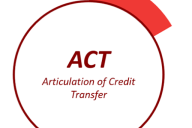You have /5 articles left.
Sign up for a free account or log in.
For the 80 percent of students who begin at a community college with the intention of earning at least a bachelor’s degree, their chances of success are shaped from the moment they begin their educational journey. Students deemed “unprepared” for college-level math who are placed into standalone remedial or developmental courses, for example, have about a one in 10 chance of achieving their goals. For Black and Latinx students who place into even one developmental course, that slim chance is trimmed even further. Therefore, equity-minded reformers committed to transfer student success are increasingly expanding their vision to connect the dots between transfer improvements and scaled reform of remediation.
Among the early momentum metrics identified by researchers at CCRC, those powerful first-year indicators of longer-term student success, gateway course completion is a critical piece of a larger puzzle. All of the states involved in the Tackling Transfer project are connecting the dots by including in their respective goal-setting efforts attention to developmental education. While the specific metrics look slightly different in each state, the common intent is to advance transfer student success by significantly increasing the number of students who complete gateway math and English during their first year of college.
So what does it mean to connect these dots in practice? It starts with understanding the root problem and the most important opportunities for progress. More than a decade of research on remediation reform in a wide range of states and institutional contexts has made it absolutely clear that neither students nor faculty are to blame for the fact students placed into traditional developmental education have almost no chance of success. It turns out that it is the traditional structures of remediation -- not the humans trying to navigate or work within them -- that have failed. The long-standing and arguably well-meaning approach that relies on the use of high-stakes tests to determine readiness, that uses college algebra as the default math for all programs of study, and that treats remediation as something that must be provided before students are granted access to credit-bearing gateway courses, simply does not work.
But research isn’t only showing us what’s not working. Innovation in a wide range of contexts is also showing what is working. As director of Strong Start to Finish Maxine Roberts said in a recent exchange,
A growing body of research and outcomes from states and systems in our network reveal that multiple measures placement, corequisite remediation, and math pathways are having positive effects on student persistence and on outcome disparities between students from different racial/ethnic and income groups. This progress is commendable, and there is much more work to be done to address barriers that negatively impact students who are racially minoritized and from lower-income communities. That’s why it’s imperative that reformers who focus on different areas of college success -- from developmental education reform to guided pathways and transfer improvement efforts -- collaborate to address the known obstacles to student success.
Institutions and systems that are moving away from the use of high stakes placement tests and toward the use of corequisite models that embed remediation in the context of credit-bearing courses are showing definitively that far more students are capable of being successful in college than our traditional structures have permitted. And early longitudinal research suggests that the gains achieved by building different structures for remediation carry through to graduation.
In addition to placement reform and the scaling of corequisite remediation, barriers to student success are removed when institutions stop using algebra as the default math requirement for all students and instead provide students with program-appropriate math pathways aligned to fields of study and the well-paying careers of today and tomorrow. There is growing agreement between employers, mathematics organizations and reformers that for many fields of study and careers, math such as statistics or data science is a more appropriate gateway math course than algebra. Scaling math pathways is one of the evidence-based core principles for transforming remediation that transfer champions should elevate in system- and institution-level transfer improvement conversations.
When academic leaders, faculty and advisers work together across institutions to ensure transfer pathways include specific attention to math pathways -- and to the applicability of math in transfer -- students, institutions and employers all benefit. Ensuring that the math taken at the community college is accepted and applied toward the bachelor’s degree in transfer is one of the core opportunities facing institutions seeking to dramatically improve outcomes and equity for baccalaureate-seeking community college students.
We commend those systems, like Tackling Transfer partner Minnesota State, that are working to align math pathways work with broader transfer pathways efforts. Through its participation in the Strong Start to Finish network alongside its Tackling Transfer work, Minnesota State is working to connect the dots. Too often, discrete initiatives proliferate without a coherent vision, contributing to the experience of “initiative fatigue” that can sap morale and slow progress. But in systems like Minnesota State, leaders are playing a vital role in building that connective tissue that holds these initiatives together within a coherent vision of equitable student success. By painting a bigger picture in which reform of placement and remediation, math pathways, and transfer pathways are all necessary pieces of the puzzle, and by providing the supports that help institutions put those pieces together, systems can significantly accelerate progress toward improving outcomes and eliminating equity gaps. As Marta Mohr, Minnesota State interim system director for transfer and degree audit support, said, “It’s our job at the system to connect the dots for institutions between math pathways and transfer pathways, and to help them do the work of putting the pieces together for our students.”


